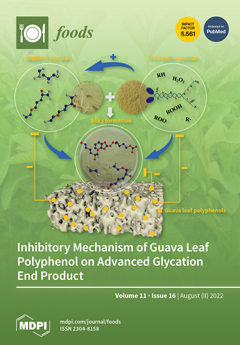Microwave radiation is one of the main heating methods for food processing, especially affecting the color quality of colorful foods. This work presents the effect of microwave radiation on the green color loss of green tea powder (GTP) by the color description (L*, a*, b*, and H
a of green tea powder, L*:whiteness/darkness, a*: redness/greenness, and b*: yellowness/blueness; H
a derived from Hunter a and b could visually describe the color space) of the Hunter color system. First, the L*, a*, and b* were determined from the GTP samples treated with various microwave powers with the change of time to investigate the kinetic of color loss. Then, the L*, a*, and b*and temperature of GTP samples with serious thickness treated with constant microwave power (700 W) for a different time were determined to study the effect of sample thickness on the color loss. Finally, the chemicals that contributed to color change in the GTP samples treated with mild, moderate, and severe radiation were analyzed. The results showed that L*, |a*| (|a*|was the absolute value of a*), b*, and H
a decreased with the power increase in microwave radiation, and their changes conformed to the first-order kinetics. The activation energies (E
a) of different thickness GTP for change of L*, a*, b*, and H
a values could be predicted with the fitting models, and E
a for 20 mm-thick GTP were approximately 1/5, 1/8, 1/8, and 1/13 of those for 4 mm-thick GTP. The color loss was mainly caused by the Mg
2+ loss of chlorophylls and the formation of derivates under mild radiation, the degradation of chlorophylls and the formation of theaflavin from catechins under moderate radiation, and the degradation of chlorophylls and their derivates accompanied by Maillard reaction between reducing sugar and amino acids under severe radiation. The results indicate that sample thickness and radiation time are two key parameters to keeping the color of GTP in food processing and microwave pasteurization.
Full article






